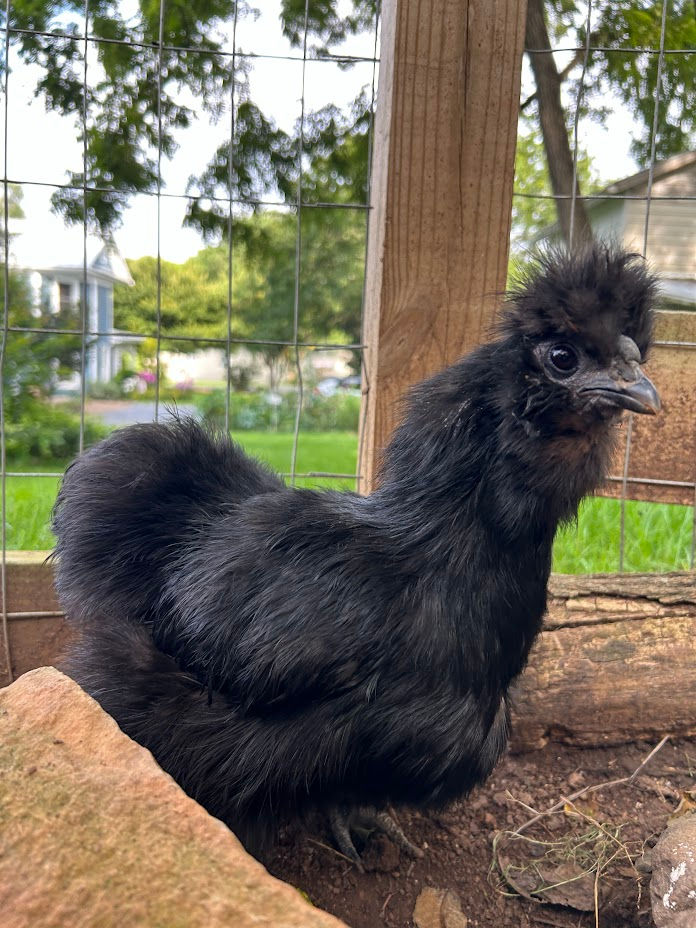Why, When & How Chickens Molt
- Rachel Brown
- Aug 7
- 4 min read
If you're new to raising chickens, it can be a little alarming the first time you walk into the coop and find it looking like a feather pillow exploded. Don’t panic — your flock isn’t under attack. They’re just molting. Molting is a completely natural (and necessary) part of a chicken’s life cycle, but understanding the why, when, and how behind it can help you support your birds through this somewhat awkward (and featherless) phase.

Why Do Chickens Molt?
Molting is the process where chickens shed their old, worn-out feathers and grow new ones. This not only keeps them looking fresh but also ensures they’re protected from the elements. Feathers degrade over time, especially with exposure to sun, dirt, pecking, and general wear and tear. New feathers help chickens regulate their body temperature and stay healthy. Molting also gives the hen’s reproductive system a rest. During molt, most hens significantly reduce or completely stop laying eggs — this is normal and temporary.
When Do Chickens Molt?
Molting usually happens once a year, typically in the late summer or early fall, when the days start getting shorter. This timing isn’t random — shorter daylight signals the bird’s internal clock to start the molt in preparation for colder weather.
There are different kinds of molts:
Juvenile molt: Happens around 6-12 weeks of age as chicks grow in their adult feathers. They call it the juvenile molt, but my experience is that chicks are constantly molting until about 12 weeks when their adult feathers are fully in.
First adult molt: Typically occurs at about 16-18 months old.
Annual molts: Happen every year after the first adult molt, usually in the fall.
Other: Stress, sudden environmental changes, or poor nutrition can also trigger an unexpected molt.
How Do Chickens Molt?
Molting is gradual, and the process usually follows a general pattern, although I haven’t always found this to be the case, some of my hens start at the tail region and then gradually lose their head/neck feathers:
Feathers fall out from the head and neck first,
Then the back, breast, and wings,
Finally, the tail.
In most cases, chickens will never lose all of their wing feathers at the same time so they still have the ability to fly in the case of an emergency or predator attack.

Molting can take anywhere from 4 to 16 weeks, depending on the bird. Some chickens go through a “hard molt” (losing lots of feathers quickly and looking scraggly), while others go through a “soft molt” and shed feathers more slowly and subtly. Some say that chickens that molt hard and fast are typically better layers, and those that take a longer time to molt are not as good when it comes to laying eggs. This does seem to ring true in my flock as I have a Buff Orpington that essentially lays about 10 eggs a year and is molting the rest of the time. She’s a special one…
How to Help Chickens During Molt
Molting is energy-intensive, and growing feathers requires a lot of protein. Here's how you can help your flock during this time:
Switch to a high-protein feed: Consider offering a feed with 18–20% protein or supplement with protein-rich treats like mealworms, scrambled eggs, or black oil sunflower seeds. Check their crops at night to ensure they are eating enough- crops should be full at night and empty in the morning when they hop off their roost. Here are some options that I like:
Reduce stress: Avoid introducing new birds or moving your flock during molt. You also want to avoid any issues with bullying that could result in broken pin feathers, injuries, or other issues that could cause infection. Your birds are already under stress so an injury sustained during a molt can results in a longer recovery time, often separated from the flock. Add some calming dried herbs to nesting boxes, bedding, and dust bathing areas. I love to use Eaton Pet and Pasture:
Limit handling: New feather growth can be sensitive and very painful for your chickens (those “pin feathers” are full of blood and nerves). If a pin feather (a new feather emerging from the body) is broken, it will bleed quite a bit and likely require medical attention. If you cannot get the bleeding to stop, you will need to pull the feather with a pair of tweezers. This is an unpleasant experience for both the chicken and the chicken-keeper.
Give them time: Don’t expect eggs until after the molt — their bodies are focused on feather regrowth, not laying. Your girls deserve a rest, they have worked hard all spring and summer providing those beautiful eggs.
Clean up the Feathers: It is important to keep the feathers cleaned up regularly to prevent mites from taking up space in your coop and making a meal out of your chickens (gross). Get a good scoop that allows the bedding to be sifted through and you will have an fairly easy clean up. I also recommend picking up feathers several times a week so it doesn’t become daunting. Here is what I use: Sifting Scoop

Final Thoughts
Molting might not be the most glamorous time of year in the chicken yard — it’s a bit like puberty for poultry — but it’s an essential and healthy part of your flock’s life cycle. With a little understanding and a lot of protein, your chickens will be back to their fluffy, egg-laying selves in no time.
Happy molting!
Stay Eggcellent,
Head Hen Rachel



Comments